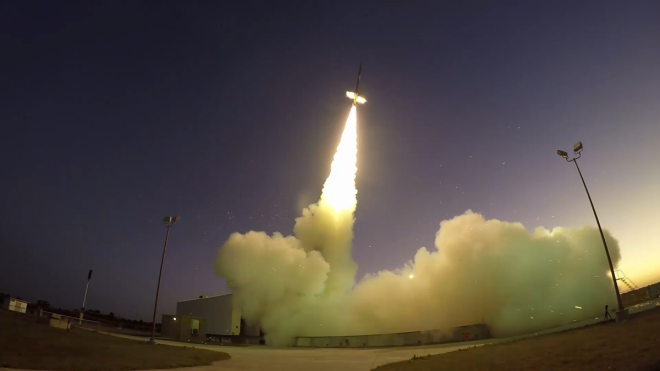NASA will use special supersonic parachutes to land its Mars rover mission which has been set to launch in 2020. The parachute has been designed to open at a supersonic speed which helps to slow down the vehicle's entry to the Martian atmosphere at a speed of over 12,000 mph (5.4 Km)
The space agency has released a video of the parachute opening at a supersonic speed during a test done in the NASA's Wallops Flight Facility, Virginia on October 4, 2017. The parachute gave a momentum which was 1.8 times the speed of sound or nearly 1,300 miles an hour and generated nearly 35,000 pounds of drag force, the friction which helps to slow the payload when it was fully inflated.
This was the first parachute test for the Mars 2020 mission which aims to seek signs of ancient Martian life. The mission's parachute-testing series named as the Advanced Supersonic Parachute Inflation Research Experiment (ASPIRE), started with a rocket launch from the NASA Goddard Space Flight Center's Wallops Flight Facility in Wallops Island, Virginia, in October 2017.
The parachute, its deployment mechanism, and high definition test instrumentations including the camera were added to the payload of the 50-foot-tall (17.7 meters) Black Brant IX sounding rocket which was used for the test mission.
The rocket carried the bullet-nosed payload to about 32 miles (51 km), acquired the velocity of the test condition and then successfully deployed the parachute. The ASPIRE fell in the Atlantic Ocean at a distance of about 34 miles (54 Km) to the southeast of Wallops Islands after thirty-five minutes of its launch.

Ian Clark, the test's technical lead from NASA's Jet Propulsion Laboratory in Pasadena, California, said, "It is quite a ride. The imagery of our first parachute inflation is almost as breathtaking to behold as it is scientifically significant."
The parachute used for the test mission was an exact copy of the parachute used in NASA's Mars Science Laboratory which had successfully landed on Martian surface in 2012. It is being strengthened for use in future Mars missions. The next ASPIRE test has been scheduled for February 2018.
The Mars 2020 rover would land in a region which has an ancient Martian environment which would have supported microbial life. It would probe on the Martian rocks and collect samples of the rocks and soil which would be returned to earth for studies. The scientists believe that such studies would unveil evidence of life on the planet as well as help in the studying future health hazards for humans on Mars.









